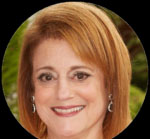
Employees from Dr. Resnick’s practice. Mariko, who is bilingual in Japanese and English, is on the far right. Mariko serves as an administrator and Japanese patient liaison/translator.
By Susan Resnick, OD, FAAO, FSLS
March 23, 2022
Over a decade ago, we embarked on a strategy to develop a cultural sub-specialty within our practice. The plan was the result of an intriguing suggestion from one of our own patients, a chiropractor, who had successfully built his own “practice within a practice.”
Here is how we built a Japanese-focused practice within our own contact lens specialty practice and how it has benefited our patients, business and professional satisfaction.
Demographic Choice
We chose a Japanese demographic based on several criteria. The first was our practice’s accessibility to Japanese travelers, Japanese-American citizens and Japanese businesses given our location on the upper east side of Manhattan in New York City. Additionally, we learned that the Japanese are savvy healthcare consumers and value quality.
Finally, and even more compelling, were the epidemiologic profile and cultural preferences of this population. These included the high prevalence of (often high) refractive error in adults, the growing myopia “epidemic” among children, the desire of most Japanese presbyopes to avoid reading glasses and the population’s overall preference for contact lens correction over eyeglasses. These patient clinical characteristics and lifestyle goals aligned perfectly with both our practice’s current focus and future directions.
Developing Cultural Competency
Our first step was to hire a bilingual Japanese employee. We were fortunate to find a Japanese woman who was a recent college graduate with a degree in marketing. Although she did not have a background in healthcare or optometry, she understood our goals and was eager to take on this complex project. She agreed to a dual role as an administrator and patient liaison/translator. We fully educated her on eyecare, contact lenses and our practice, and, in turn, she educated us on Japanese social, consumer and health-related customs.
Next Steps
Our next step was the targeted marketing and advertising of our services. We took a multifaceted approach that included securing membership on Japanese insurance panels, purchasing print advertising, personally canvassing local businesses and launching a Japanese language “sister” homepage. We continue to employ all these strategies on an ongoing basis.
Turning our attention to providing culturally aligned office amenities, we display Japanese language literature including newspapers, magazines and coffee table books. We make available a selection of green tea in addition to our customary coffee. And, of course, we have several of our office brochures covering services and materials available in Japanese.
Patient Communication and Administration
Our Japanese liaison has a dedicated phone line for receiving calls and messages from Japanese patients. She handles all patients who wish to communicate in Japanese as well as those who speak English, but prefer to be assisted by our Japanese staff member.
Japanese patients are provided with our Japanese liaison’s business e-mail address, which differs from our practice e-mail address.
Our Japanese staff member handles new and returning patient appointment scheduling, fee discussion and collection and insurance coding and billing.
Patient Care
Clinical examinations are primarily performed by our associate doctors and our ABO-NCLE certified opticians, with our principal doctors filling in as necessary. We employ this approach for two reasons. The first is that Japanese patients do require more time for their appointments due to the time involved in translation and our associates’ schedules can more easily accommodate the need for this flexibility. The second is that growing the Japanese patient base has resulted in filling our associates’ schedules, thereby improving both our gross and net revenues.
Ancillary testing such as auto-refraction, visual fields and retinal imaging is performed by our English-speaking staff with translation as needed. Our contact lens technicians will, likewise, deal directly with those Japanese patients who feel comfortable conversing in English. Our Japanese staff member is available as needed in these cases for further explanation or clarification in their native language.
Other Articles to Explore
Our Japanese staff member has been trained to perform many of the same tasks as our English-speaking contact lens technicians such as explaining the different types of lenses, pulling diagnostic lenses and teaching insertion and removal. This significantly reduces the length of the contact lens fitting, dispensing and follow-up visits, as well as fostering trust and ensuring high-quality patient education.
Practice Benefits: The Bottom Line and Beyond
Prior to the pandemic, in 2019, our total revenue from Japanese patients was $205,000. Of that, $84,000 was from new patients. Our costs for a full time Japanese employee, inclusive of benefits, plus advertising costs of $7,500 was $60,000, resulting in a net revenue of $145,000.
As we were just starting to grow our myopia management services, we were looking forward to marketing to our existing patient base at the start of the pandemic. The pandemic affected our Japanese business to a greater degree and for a longer period than our other revenue streams due to the complete halt of international travel.
We look forward to rejuvenating and rebuilding over the next couple of years.
Providing culturally competent services, whether to an existing patient base or a new one, is a professionally rewarding strategy for meeting the optometric needs of diverse populations and enhancing practice profitability.
 Susan Resnick, OD, FAAO, FSLS, is president of Drs. Farkas, Kassalow, Resnick & Associates in New York City. To contact her: sresnick525@gmail.com
Susan Resnick, OD, FAAO, FSLS, is president of Drs. Farkas, Kassalow, Resnick & Associates in New York City. To contact her: sresnick525@gmail.com





















